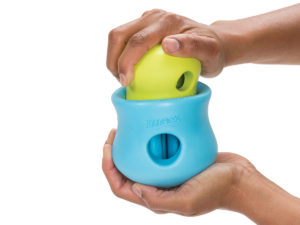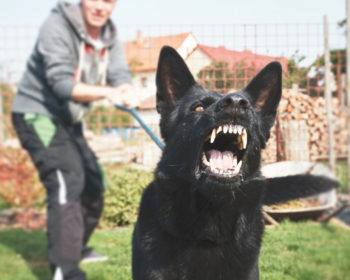That Dog Needs a JOB
 There’s a common idea that has made its way into the opinion of the dog-loving public: certain dogs, especially “working breeds,” need a job. Border Collie getting into the trash? He needs a job. Lab too hyper to relax in the evening? She needs a job. Jack Russell Terrier spending all day barking at squirrels? He needs a job.
There’s a common idea that has made its way into the opinion of the dog-loving public: certain dogs, especially “working breeds,” need a job. Border Collie getting into the trash? He needs a job. Lab too hyper to relax in the evening? She needs a job. Jack Russell Terrier spending all day barking at squirrels? He needs a job.
I certainly agree that most dogs (or perhaps all of them) would benefit from “having a job,” but I find that the average dog owner is confused by this phrase. They want their dog to be happy, healthy, and fulfilled… but what exactly does it mean to give a dog a job?
When I hear “that dog needs a job,” I translate that into, “that dog needs to use his brain.” Here’s another tidbit you can bet on: brain work will ALWAYS make a dog more tired than just physical work. Here are three common categories of brain work:

West Paw Toppl
There are a number of puzzles on the market that are designed to make the dog put in effort before being rewarded with the treat. My favorites include the West Paw Toppl, the Premiere Tug-a-Jug, and the Kong Wobbler. Depending on your dog, consider loading these puzzles up with regular kibble instead of treats. In most cases, you can certainly put your dog’s entire meal into the toy. This avoids empty calories and also makes breakfast or dinner an activity. An advantage of this form of brain work is that the human doesn’t have to be present. A disadvantage is that some dogs figure out the puzzle very quickly while other dogs give up and become disinterested.
OBEDIENCE COMMANDS
Obedience commands such as sit, heel, come, and place are the ultimate in brain work. Not only does the dog need to focus on the behaviors and pay attention to you, but in the long term practicing these commands increases their reliability and helps you to control your dog even around very high distractions. Since brain work always makes a dog more tired than just physical work, the more you require your dog to use his brain on a walk, the more tired he will be when you return home. Require a formal heel (no sniffing!). Ask for sits at crosswalks. Vary your pace. All of these small steps add up to a tired pup! Another great way to use obedience as brain work is to require your dog to stay on her “place” while you are cooking, eating, cleaning, doing homework, etc. You’re literally telling your dog, “It’s your job to stay on your bed right now.”
TRICKS

Teaching your dog fun tricks is another great way to work her brain. Tricks such as ring a bell, say your prayers, and take a bow are always big crowd pleasers. A big advantage to tricks is that most of them can be taught and practiced indoors. Trick training is a great rainy day activity! We offer a very popular trick class at Flying Colors. If you’re looking for self study, the books written by Kyra Sundance are a great resource for how to teach tricks, some of which are very challenging.
If you have an energetic dog who tends to get into trouble when he’s bored, I hope you’re able to use some of these suggestions to give him “a job.” Once you make “brain work” a part of your dog’s regular routine, you’re going to see how much happier and calmer he can be!




